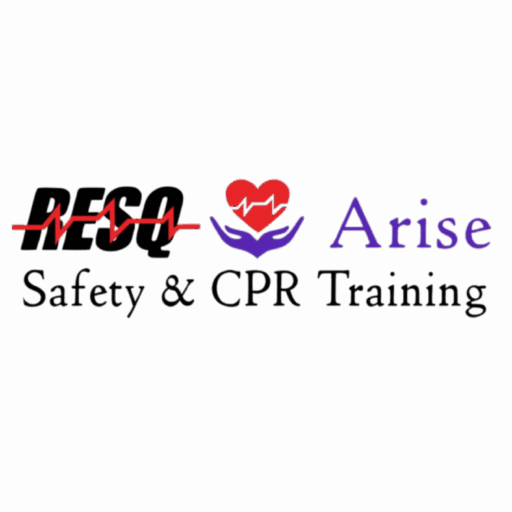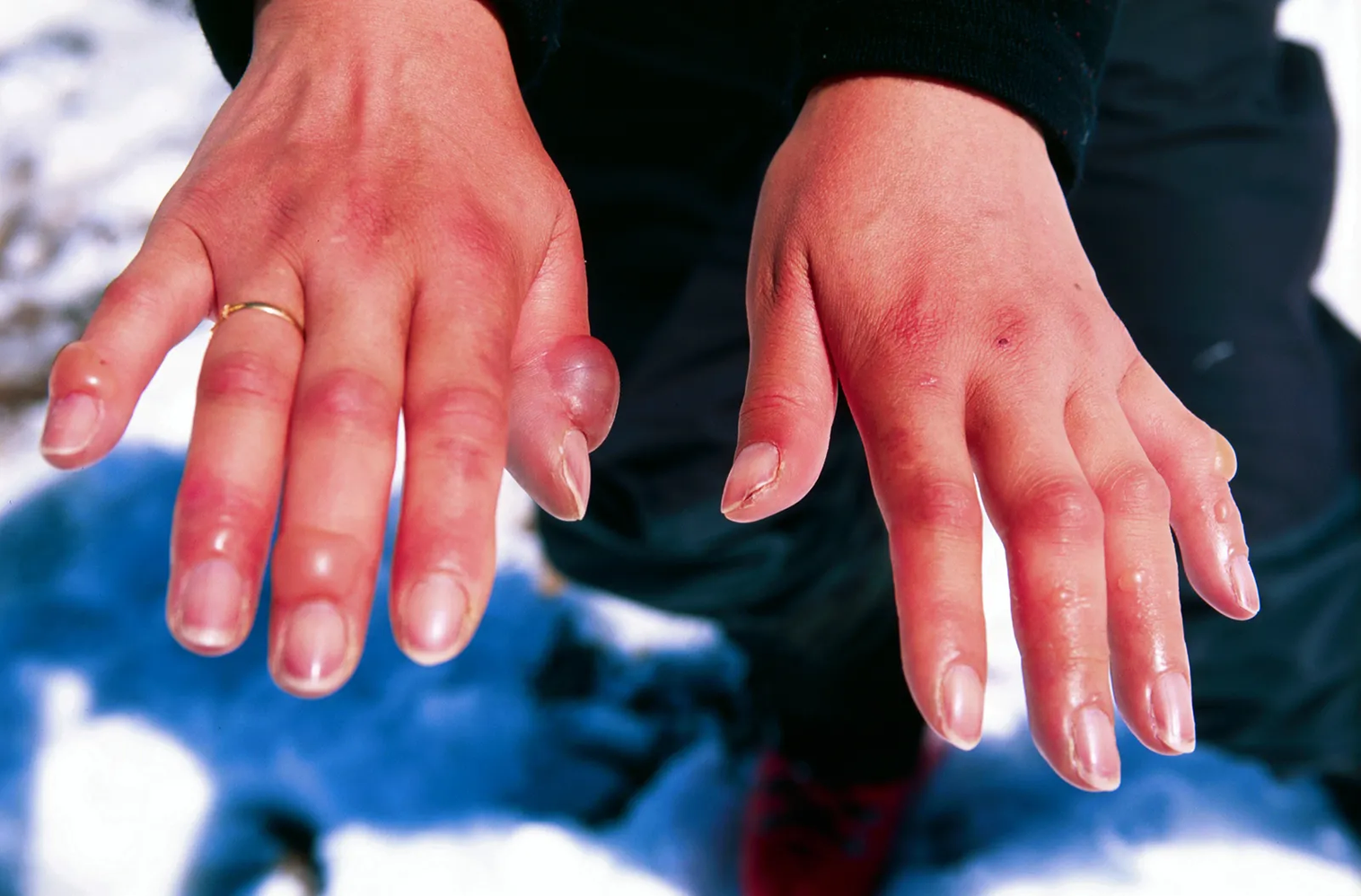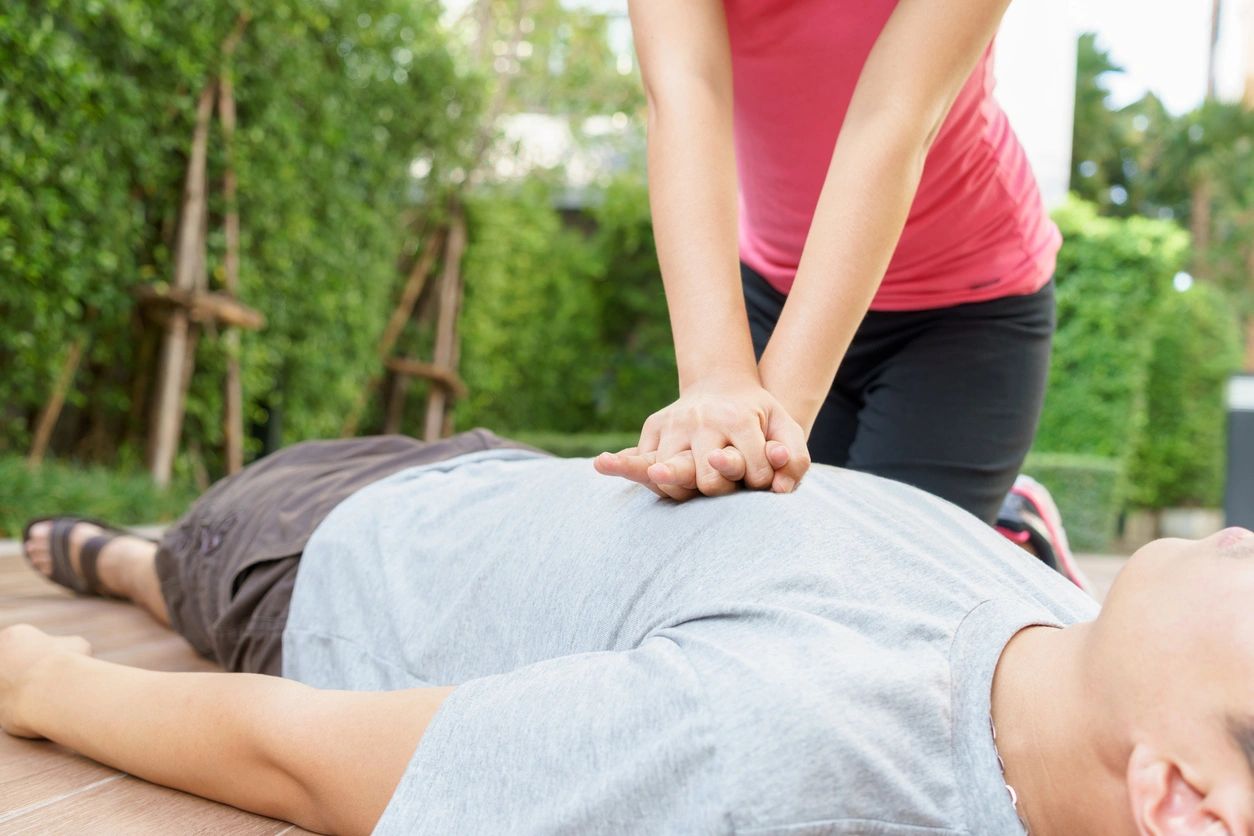“Bitter, bitter cold” is the way one patient described the Upper Midwest weather conditions that left him hospitalized with frostbite. Living here, we get pretty used to the bitter temperatures that head our way each winter. Unfortunately, this familiarity can also lead us to underestimate the health risks of these freezing conditions. Such is the case for people living in winter climates everywhere, as well as visitors who are unaccustomed to the dangers of the cold.
When we don’t properly prepare for the mighty winter elements, serious injuries like frostbite can and do happen – fast. But how fast? Read on to learn more about frostbite and how to stay prepared and protected.
What is frostbite?
Frostbite is considered a type of burn that happens when the skin and tissues below it begin to freeze. It usually occurs when skin is exposed to below-freezing temperatures for a certain amount of time, which varies based on the temperature and how fast the wind is blowing (windchill).
How long does it take to get frostbite?
The colder the temperature, the faster you can get frostbite. And when you add wind and water to the mix, the process speeds up even more. Every person and every situation are different, but here are a few guidelines for understanding the risk for frostbite:
- When the temperature is zero degrees Fahrenheit or below, it takes about 30 minutes for exposed skin to get frostbite.
- At 15 degrees below zero with even a little bit of wind, frostbite is possible within 15 minutes.
Windchill temperature and frostbite chart
The chart below from the National Weather Service shows how long it might take to develop frostbite at varying temperatures and wind speeds.

What does frostbite look like?
In more mild cases of frostbite, the skin appears pale blue or grayish. In severe cases, red and swollen blisters can develop after rewarming the affected areas. Afterward, skin can turn dark purple or black if tissues are badly damaged.
Early symptoms of frostbite
Your fingers, toes, nose, ears, cheeks and chin are the most common places for frostbite. Knowing the early symptoms can help you treat frostbite fast and have the best recovery outcome. Here’s what the first signs of it look and feel like:
- Your skin starts to become cold
- You may experience a pins-and-needles sensation
- You have a loss of feeling (numbness)
- Your skin turns white or a pale, bluish gray
- Your skin feels stiff or rubbery to the touch
Stages of frostbite
There are three stages of frostbite: mild, superficial and severe. These are determined by how deeply your skin and tissues have frozen.
Mild frostbite (frostnip)
Mild frostbite is when your skin has been irritated by the cold, causing pain or numbness. You may feel a tingling, prickly sensation when the skin warms again. Mild frostbite is temporary and can be treated at home (we cover treatment remedies below).
Superficial frostbite
When skin layers have frozen farther down, it’s considered superficial frostbite. In addition to the pain and numbness of mild frostbite, at this stage your skin also becomes slightly discolored, turning light blue or grayish. When the skin is gently rewarmed, you may experience a prickly, burning sensation, swelling, and the area might feel warm (a sign it’s been affected more seriously). 12-36 hours later you may notice fluid-filled blisters. You can treat superficial frostbite with home remedies right when it happens, but you should seek medical care soon after rewarming the skin.
Deep frostbite (severe)
Deep frostbite (the most severe kind) means that all the layers of your skin and the tissues beneath it have frozen significantly. When this happens, your skin turns white or a bluish gray, and is numb to feelings of cold or pain. It may be stiff and rubbery when touched, and your joints and muscles may have difficulty working. After rewarming the skin, fluid-filled blisters may appear within 24-48 hours, and the damaged skin will turn black.
Severe frostbite has longer-term affects and requires immediate medical attention – sometimes involving hospitalization. In the most critical cases, tissues are seriously damaged and amputation may be needed if blood flow to the skin is permanently blocked. In other instances of severe frostbite, patients may avoid amputation, but experience lifelong numbness in the affected areas.
What to do if you have frostbite
If you think you’re experiencing frostbite, take these steps for First Aid right away:
Protect your skin from the elements
If you can’t get to a warm place inside just yet, try to cover the affected areas to protect them from the cold and wind. You can put your hands into your pockets, sleeves or armpits to try to warm them with your body heat.
Get out of the cold
Get out of the cold and into a warmer temperature as soon as possible. Take off any wet clothing and cover up with warm, dry clothes and a blanket.
Check for signs of hypothermia
Hypothermia is a potentially life-threatening condition that happens when your body is losing heat faster than it can produce heat. If your body temperature gets too low, your critical organs (like your heart, lungs and nervous system) can’t function. To check yourself or someone else for hypothermia, look for signs like shallow breathing, weak pulse, confusion and slurred speech – and seek emergency help quickly.
Gradually warm the frostbitten areas
Warm frostbitten fingers and toes by soaking them in slightly warm (not hot) water for 15-30 minutes. It’s very important to rewarm the affected area gently and gradually, because using hot water to warm it too quickly can cause more damage. Test the temperature of the water with an area that isn’t frostbitten, like your elbow. For other areas like your face, ears or extremities, apply a warm, wet washcloth.
Note: Don’t rewarm frostbitten skin with direct heat like a fireplace or heating pad, due to the risk of burns. Remember, frostbite itself is a type of burn and needs to be cared for with gentle, moist warmth.
Heat yourself up from the inside
Drinking warm liquids like tea or soup can help your body warm up internally, too.
Over-the-counter pain medicine
Taking an over-the-counter pain medication like ibuprofen can help ease discomfort.
When to see a doctor for frostbite
As your skin rewarms and blood flow returns, you may feel a tingling or burning sensation. If you begin to notice skin discoloration, continued numbness or other symptoms that are out of the ordinary, make an appointment with a doctor right away or visit your local urgent car. Note: If your fingers or toes frequently turn white and feel tingly in regular cold conditions (even after warming up) you may want to ask your doctor if Raynaud’s could be a possible cause.
Preventing frostbite: Preparation is key
Every winter, we see countless victims that have come in with frostbite injuries. Many times, the frostbite happened when these patients were out doing ordinary tasks that just didn’t go as planned. Getting stranded in the cold in a stalled or disabled vehicle tends to be a common situation. There are also people who get locked out of their house, or who slip outside and can’t get up after the fall.
Limiting trips outdoors when the temperature is below zero is the best way to prevent frostbite. But if you do need to leave, remember to be prepared by expecting the unexpected. Here are our top four tips:
- Dress (or pack) for success. Whether you’re planning to spend the whole day outdoors or just heading to the grocery store, make sure you’re wearing (or bringing along) the right clothes. The best choices are clothes made of wool, down or Thinsulate – all of which prevent the loss of body heat. And don’t forget a warm hat, mittens and a pair of boots.
- Keep a cold weather emergency kit in your car. It’s wise to keep a box or bag in your car that contains things you might need in an emergency. In the winter months, that means extra layers of clothes, including hats, scarves, mittens and socks; a blanket; chemical hand and foot warmers; an LED flashlight; jumper cables; a snow scraper and snow shovel.
- Keep your cell phone with you. Most of us do this anyway, but it’s still a good reminder in case of an emergency situation. Don’t assume you’ll be able to reach someone nearby – carry your phone with you and make sure its battery is fully charged. It’s also a good idea to keep a charger with you or in your car.
- Stay calm if you find yourself exposed to extreme cold. While these situations can be very stressful, it’s important to remain calm. For one thing, you’ll have a better chance at thinking clearly if you’re calm. Secondly, fear can cause sweating, which cools the body and can make you feel chilled. Take several deep breaths and try to stay positive. Then, while you’re figuring out a plan, get your body moving to increase blood flow and make more body heat. (Just be careful not to be so active that you sweat.)
There’s so much to enjoy about the wintertime, but it’s important to stay on our guard and be prepared for temperatures to drop. When you know you’re ready to protect yourself and your family from the cold, that peace of mind allows you to embrace all the season has to offer.





